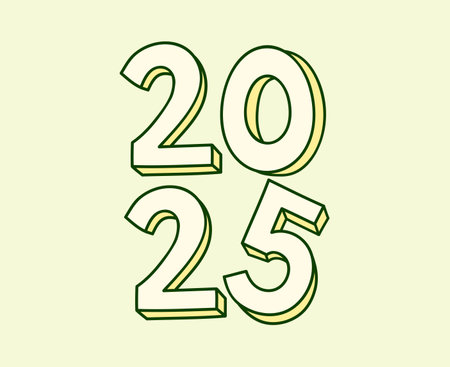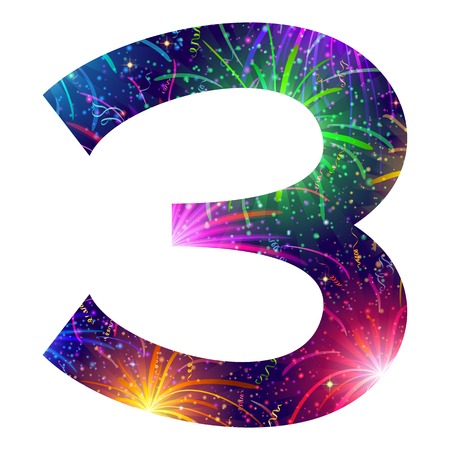Understanding the Devil Card in Tarot
The Devil card stands as one of the most provocative and misunderstood figures within the Tarot’s Major Arcana. Traditionally numbered fifteen, it is visually striking—often depicted as a horned figure presiding over two chained individuals, evoking feelings of both discomfort and curiosity. In Tarot lore, The Devil represents themes of temptation, materialism, bondage, and taboo—concepts that resonate across cultures but take on unique inflections within British society. From a universal perspective, this card speaks to humanity’s perennial struggle with desires and vices; it reminds us that while our shadows may be daunting, they are also an intrinsic part of our psychological landscape.
In the context of a standard Tarot deck, The Devil follows Temperance and precedes The Tower, marking a pivotal stage in the spiritual journey through the cards. Where Temperance advocates balance and moderation, The Devil confronts us with excess and indulgence, asking us to acknowledge where we might be ensnared by unhealthy attachments or societal taboos. For those in Britain, this can mean examining the subtle interplay between public decorum and private temptation—a motif deeply embedded in British history and literature. Whether approached from the standpoint of Jungian archetypes or traditional Tarot interpretation, The Devil card ultimately encourages both self-awareness and compassion towards our most human frailties.
2. Temptations in British Culture: Echoes of the Devil
The Devil card in tarot is often associated with themes of temptation, bondage, and indulgence—symbols which find subtle resonance within British society. To understand these echoes, it is necessary to reflect on the deep-seated taboos and moral codes that have historically shaped the United Kingdom’s collective conscience. While Britain is frequently viewed as a bastion of composure and decorum, beneath this calm veneer lie undercurrents of desire and forbidden allure, akin to the secretive energy of the Devil card.
British culture has long been defined by its distinctive relationship with temptation. For generations, certain desires—whether material, sensual, or emotional—were quietly discouraged by an unspoken social code. This suppression gave rise to a particular form of temptation: one that thrives in silence and shadow. The British “stiff upper lip,” for example, may conceal yearnings that are never openly discussed. Yet, as with the figures chained to the Devil’s throne in tarot iconography, these temptations continue to exert their influence from the shadows.
Manifestations of Temptation in Modern Britain
In contemporary times, British society’s engagement with temptation is more nuanced. There is a growing openness about subjects once considered taboo—yet some boundaries remain firmly entrenched. Consider how attitudes towards drinking, gambling, or extramarital affairs are both indulged and censured depending on context and company. The tension between outward respectability and private indulgence reflects the duality present in the Devil card.
| Temptation | Cultural Taboo | Societal Attitude |
|---|---|---|
| Alcohol Consumption | Public Drunkenness | Widely accepted in moderation; frowned upon when excessive |
| Gambling | Financial Recklessness | Popular pastime but associated with moral risk |
| Infidelity | Breach of Marital Trust | Disapproved publicly; sometimes overlooked privately |
| Sensuality & Desire | Overt Expression | Tolerated within bounds; discretion valued highly |
| Materialism | Ostentatious Display | Pursued subtly; overt show considered vulgar |
Cultural Reflection: The Devil’s Whisper in Everyday Life
The interplay between temptation and restraint continues to shape British daily life. Whether at the pub after work, within family dynamics, or behind closed doors, individuals navigate a landscape where certain desires are acknowledged only obliquely. This delicate balance embodies the lesson of the Devil card—not simply warning against vice, but inviting honest self-examination about what we deny ourselves and why.

3. Historical and Literary Depictions of the Devil in Britain
Throughout British history, the figure of the Devil has been a potent symbol, woven deeply into the nations folklore, literature, and cultural consciousness. From medieval times to the present day, tales of temptation and moral struggle have often found their personification in this enigmatic entity. The Devil’s image in Britain was heavily influenced by early Christian doctrine, yet it also absorbed features from ancient pagan beliefs, resulting in a uniquely local interpretation. In rural communities, stories of deals struck at crossroads or mysterious figures offering forbidden knowledge were retold with a distinctly British flavour—often tinged with both cautionary and mischievous undertones.
In literature, the Devil has emerged as a compelling character, symbolising humanitys perpetual dance with temptation and vice. Works such as Christopher Marlowe’s Doctor Faustus and John Milton’s Paradise Lost offered nuanced portrayals of demonic influence. In these texts, the Devil is not merely an external foe but often reflects internal conflicts: pride, ambition, and the yearning for forbidden knowledge. The motif of ‘making a pact with the Devil’ became a recurring theme in British storytelling, mirroring societal anxieties around morality, personal desire, and social taboo.
British folklore is equally rich with tales involving the Devil—ranging from legends explaining odd geological formations (such as the Devil’s Dyke or the Devil’s Bridge) to folk stories featuring cunning individuals outsmarting or bargaining with this otherworldly figure. These narratives served both as warnings against overstepping societal bounds and as subtle critiques of authority figures who themselves might embody vice.
This complex tapestry of historical and literary depictions continues to shape how the Devil Card is understood within British tarot practice. Rather than representing simple evil or misfortune, the card evokes deeper questions about personal responsibility, the allure of breaking taboos, and society’s shifting boundaries between acceptable behaviour and transgression. By examining these stories, we gain insight into how British society negotiates its relationship with temptation—an ongoing dialogue reflected each time The Devil appears in a tarot spread.
4. Everyday Encounters: Modern British Taboos
The Devil card, with its enduring symbolism of temptation and restriction, finds striking resonance within the realm of modern British taboos. In contemporary society, these taboos no longer revolve solely around ancient superstitions or overtly religious restrictions but have evolved into more nuanced boundaries. Navigating these invisible lines can be as complex and charged as any Tarot reading, with the subtle allure of crossing them echoing the Devil’s invitation to dance with forbidden fruit.
Understanding the Landscape of British Taboos
British culture is renowned for its adherence to unwritten rules—those unspoken expectations that, when breached, provoke discomfort or even quiet outrage. From the etiquette of queueing to the decorum expected in public conversation, these taboos shape daily interactions. The pressure to conform, much like the chains depicted on the Devil card, can feel both protective and stifling.
Common Contemporary Taboos in Britain
| Taboo | Description | Social Consequence |
|---|---|---|
| Queue Jumping | Breaking the sacred order of waiting in line | Disapproval, verbal rebuke, social exclusion |
| Discussing Money | Openly talking about salary or personal finances | Awkwardness, perceived rudeness |
| PDA (Public Displays of Affection) | Overt expressions of romantic affection in public spaces | Embarrassment, silent judgement |
| Breach of Political Correctness | Using language or expressing views outside accepted norms | Censure, loss of reputation or opportunities |
| Taking a Stance on Controversial Topics at Dinner Parties | Discussing politics, religion, or Brexit at social gatherings | Tension, fractured relationships, social avoidance |
The Devil’s Pull: Temptation to Transgress
The allure behind these taboos is not merely in their existence but in the subtle thrill that comes from bending or breaking them. The Devil card reminds us that part of being human is grappling with desires to test boundaries—whether it’s a whispered joke about politics at work or challenging the status quo on social issues. In Britain’s current climate, where political correctness and sensitivity are highly prized, there is a quiet but palpable fascination with those who dare to step beyond what is permitted.
Thus, modern British society presents an intricate dance with its own set of devils: everyday temptations that invite both connection and censure. Each breach carries risk and reward, echoing the Tarot’s ancient wisdom that liberation and enslavement often walk hand in hand beneath the surface of polite civility.
5. Tarot Readings in the UK: When the Devil Appears
The presence of the Devil card in a Tarot spread often elicits a strong reaction, and this is no less true in Britain, where centuries-old traditions mix with modern sensibilities. Both professional and amateur Tarot readers across the UK approach the Devil card with a blend of reverence and caution, fully aware of its powerful symbolism and the cultural undertones that shape its interpretation.
Understanding British Perspectives on Temptation
In British society, discussions around taboo subjects are often approached with understatement and subtlety—a reflection of the national preference for reserve. When the Devil appears in a reading, readers may gently guide clients to consider what binds or tempts them without direct confrontation. It’s not uncommon for the Devil to be interpreted as a nudge towards self-awareness, highlighting unhealthy patterns or dependencies, whether in relationships, habits, or personal beliefs.
Common Questions Clients Ask
Clients in the UK frequently seek clarity when the Devil card emerges. Typical questions include: “Am I being led astray?” “Is there something I’m not seeing clearly?” or “How can I break free from negative influences?” These queries reflect both a curiosity about hidden motivations and a desire to remain respectable—core elements of British social consciousness. Tarot readers respond by encouraging reflection on personal autonomy and responsibility, respecting the client’s boundaries while offering honest insights.
Cultural Nuances in Interpretation
British Tarot practitioners are sensitive to local attitudes surrounding vice, morality, and social acceptance. For instance, while some cultures might address temptation directly, British readers often frame such discussions within the context of choice and empowerment rather than guilt or shame. There is also an awareness that certain taboos—such as addiction or infidelity—are discussed with discretion, ensuring that clients feel safe and respected during their session.
The Role of Tradition Versus Modernity
Across Britain’s diverse regions—from cosmopolitan London to rural Yorkshire—approaches to the Devil card can differ. Some readers draw upon traditional interpretations rooted in folklore and Christian symbolism, warning of material excess or moral compromise. Others adopt a contemporary lens, focusing on psychological growth and liberation from outdated beliefs. Regardless of style, British Tarot readers aim to offer guidance that honours both individual circumstances and collective values.
In essence, when the Devil appears during a Tarot reading in the UK, it serves as an invitation to explore life’s temptations and taboos through a uniquely British filter—one that balances candour with compassion, tradition with open-mindedness.
6. Personal Reflection and Empowerment
When the Devil card appears in a tarot reading, particularly within the context of British society, it invites a moment of honest introspection. The traditions and cultural landscape of Britain—marked by its famed reserve, wit, and nuanced approach to societal expectations—often mean that discussions around temptation and taboo are layered with subtlety. In this setting, the Devil card serves as a mirror, urging us to explore not only our hidden desires but also the unspoken rules that shape our actions.
Guided Introspection: Facing Temptations with Courage
Rather than viewing the Devil card solely as an omen of danger or vice, it can be seen as a gentle nudge towards self-examination. When confronted with temptations or taboos—be they personal habits, secret ambitions, or pressures to conform—it is important to pause and reflect. Ask yourself: Are these temptations truly detrimental, or do they reveal something deeper about my needs and values? What taboos have I inherited from my community or family, and do they still serve me?
Harnessing Self-Awareness
The Devil card encourages us to look beneath the surface. In the British tradition of understated resilience, this might involve journaling about your impulses or discussing them with a trusted confidant over a cup of tea. Recognising your patterns is not an act of self-condemnation but one of liberation. By shining a light on what has been hidden, you reclaim agency over your choices.
Empowerment Through Acceptance
Ultimately, the power of the Devil card lies in its ability to foster self-acceptance and strength. In acknowledging both your shadows and your virtues, you break free from shame and secrecy. This process is deeply empowering; it allows you to step forward with confidence, knowing that you are more than any single temptation or taboo. Embracing this holistic view is especially meaningful in British culture, where personal growth often unfolds quietly but steadfastly.
By using the Devil card as a tool for reflection rather than fear, you cultivate greater self-awareness and resilience. This path leads not only to personal empowerment but also to a richer understanding of the intricate dance between individuality and society—a timeless journey well worth embarking upon.

